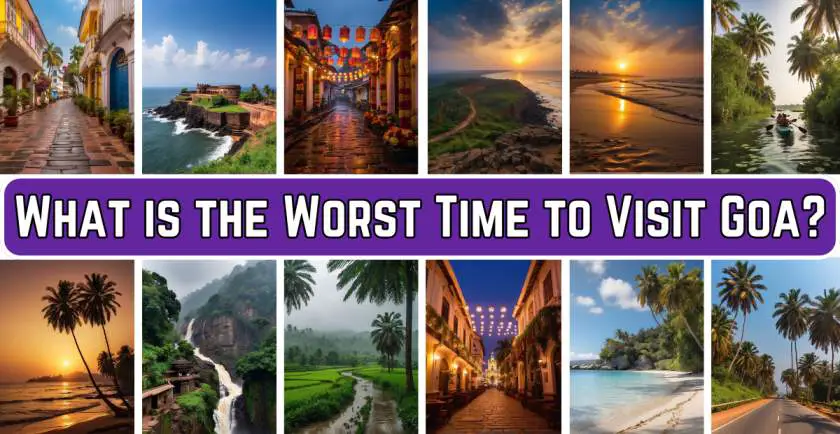Welcome to our travel blog, where we offer comprehensive insights into the best and worst times to visit destinations around the world. Today, focusing on the “Worst Time to Visit Goa,” we delve into the multifaceted charm of Goa, India’s coastal paradise, known for its stunning beaches, vibrant nightlife, and a unique blend of Indian and Portuguese cultures.
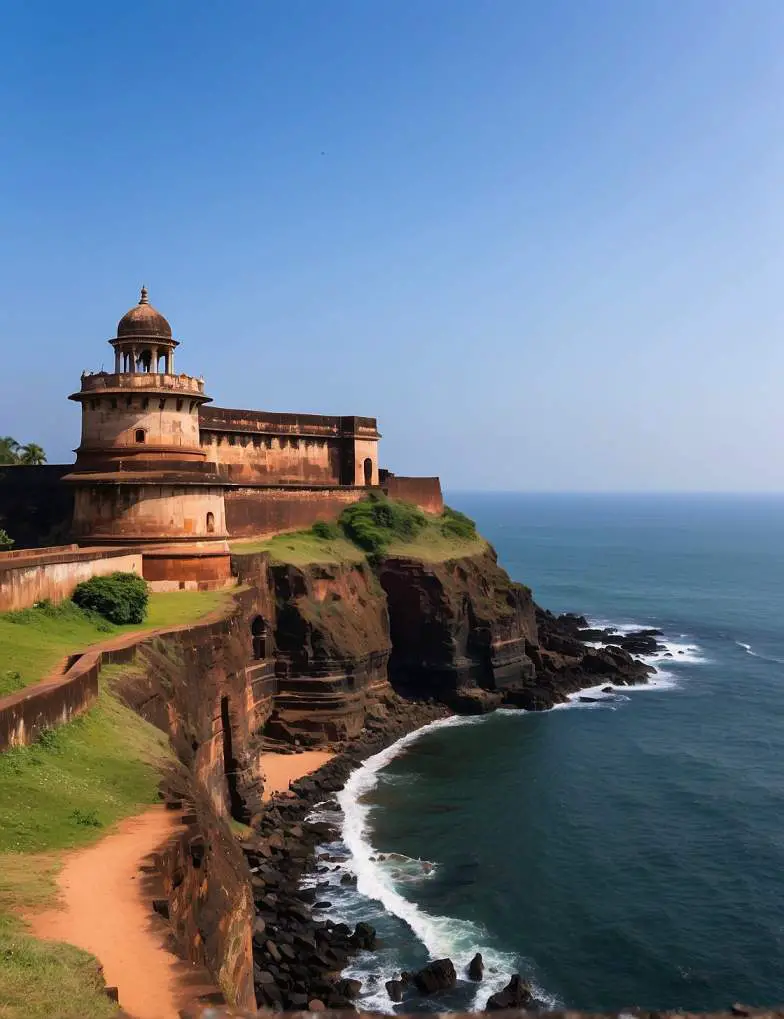
Let’s explore the nuances of each season in Goa, helping you plan your trip perfectly, whether you’re on a budget, traveling with family, or looking for a quieter experience.
The Monsoon Season in Goa: Beauty and Budget-Friendly (June to September)
The monsoon season in Goa, stretching from June to September, transforms the landscape into a verdant paradise, offering a unique and enchanting experience that is markedly different from the beach-centric image often associated with Goa.
1. The Transformative Beauty of Goa During Monsoon:
- Lush Greenery: As the monsoon rains sweep across the state, they bring life to the flora. The countryside turns a vibrant green, with paddy fields swaying, rivers brimming with life, and the forests of the Western Ghats becoming a haven for nature lovers.
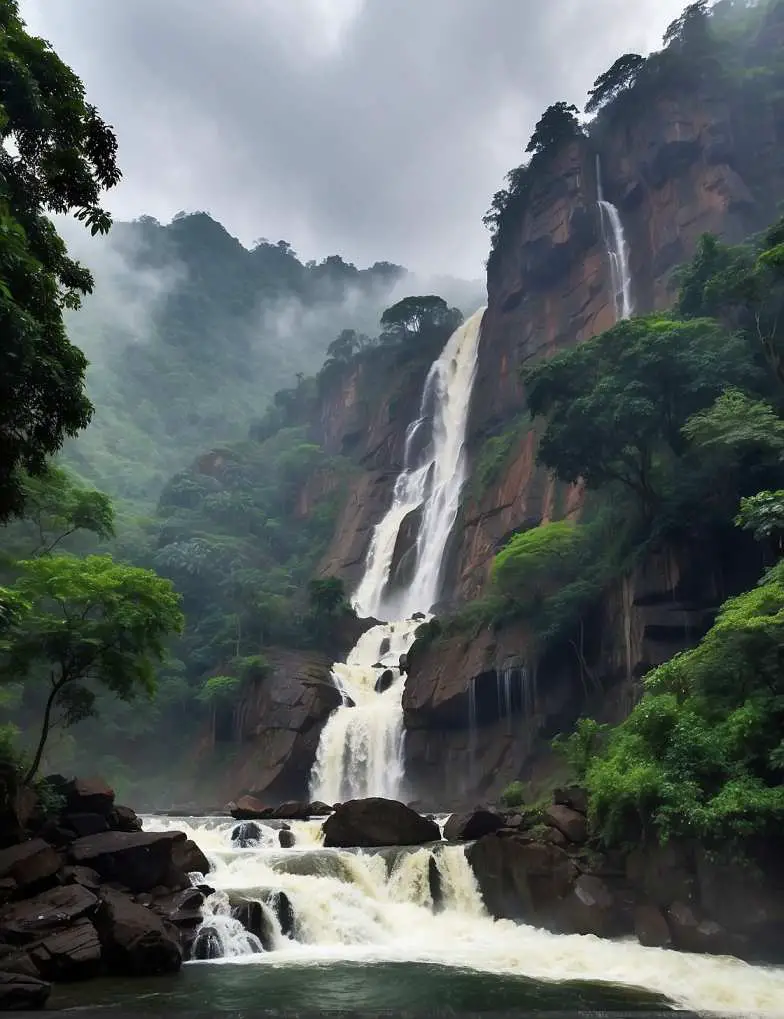
- Waterfalls and Wildlife: This is the time when Goa’s waterfalls, like Dudhsagar Falls, are at their most majestic. The wildlife sanctuaries, such as Bhagwan Mahavir and Cotigao, offer richer experiences with lush landscapes and active wildlife.
2. Budget-Friendly Aspect:
- Lower Prices: The drop in tourist numbers during the monsoon leads to a decrease in prices for hotels and resorts. This makes it an ideal time for budget travelers to experience Goa’s beauty at a fraction of the cost.
- Discounts on Flights and Services: Airfares to Goa tend to be lower, and local services such as car rentals and guided tours might also offer off-season rates.
3. The Cultural Experience:
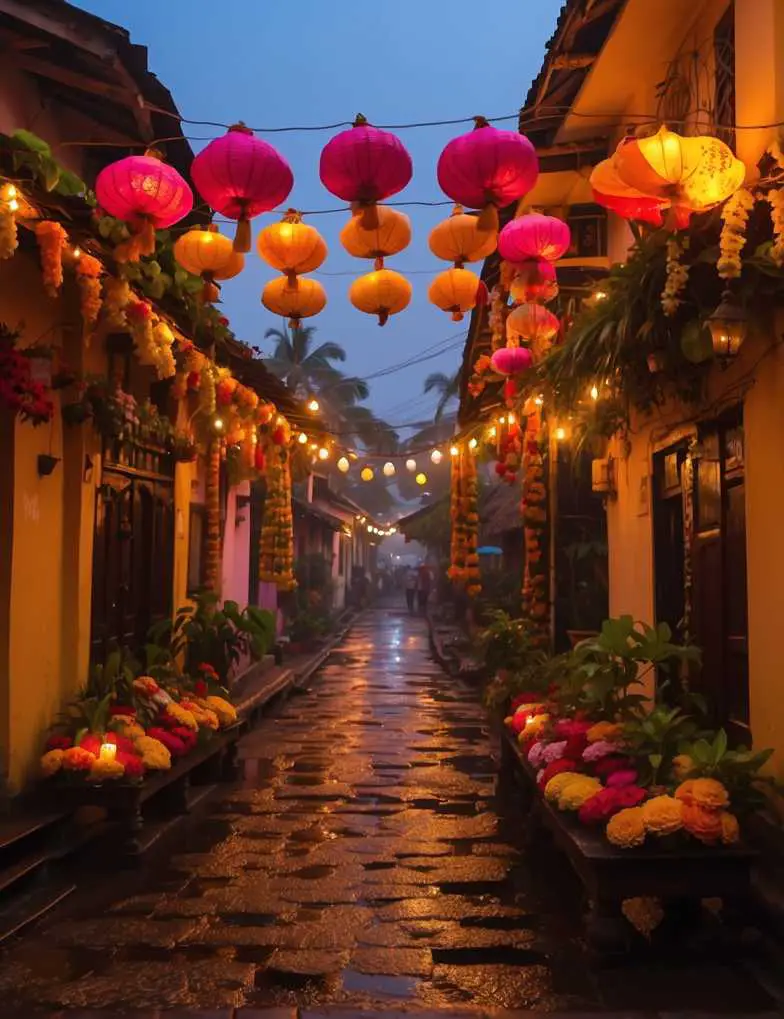
- Festivals: Monsoon in Goa is not devoid of cultural experiences. Festivals like Sao Joao (celebrated in June) and the Feast of St. Peter (end of June) showcase Goa’s vibrant culture with boat parades, traditional music, and dance.
- Goan Cuisine: This is also a great time to explore Goan cuisine, as the cooler weather is perfect for savoring local dishes like seafood curries, Bebinca, and Feni, the local spirit.
4. Considerations and Preparations:
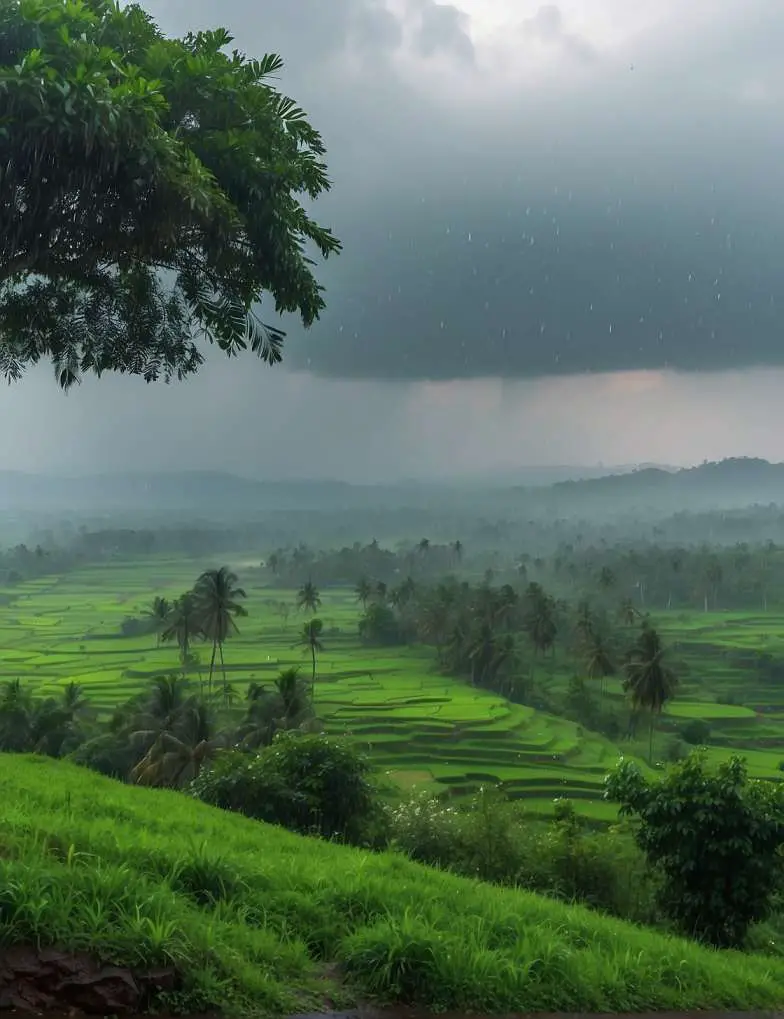
- Weather Conditions: The monsoon in Goa means heavy, continuous downpours, often leading to waterlogging in certain areas. It’s important to be prepared for this by carrying appropriate rain gear, waterproof bags, and sturdy footwear.
- Limited Beach Activities: Beach activities are limited during this time as the seas are rough and most beach shacks are closed. However, this also means you have the beaches largely to yourself, a rare experience in Goa.
- Travel and Stay: When planning your stay, consider choosing accommodations that are not too remote, as heavy rains can affect transport and access to certain areas.
The Late Summer in Goa: Balancing Cost and Comfort (April to May)
The late summer months of April and May in Goa present a unique phase, characterized by a rise in temperature and humidity just before the onset of the monsoon. This period offers a balance for travelers seeking cost-effective travel without the monsoon’s challenges.
1. Climatic Conditions:
- Heat and Humidity: During these months, Goa experiences its highest temperatures, often crossing 35°C (95°F). The humidity levels also increase, making the heat feel more intense.
- Sunny Days: Despite the heat, this period sees clear, sunny days, ideal for those who want to soak up the sun on Goa’s beautiful beaches.
2. Budget-Friendly Travel:
- Reduced Tourist Footfall: With the peak tourist season over, April and May see fewer tourists. This results in more competitive pricing for accommodations, from luxury resorts to budget stays.
- Affordable Airfare and Services: Airfares and other travel-related services, such as car rentals, tend to be lower during this period, making it more accessible for budget-conscious travelers.
3. Beach Experience:
- Less Crowded Beaches: The beaches are significantly less crowded, offering a more relaxed atmosphere. It’s an excellent time for those who prefer a quiet beach experience.
- Water Activities: Most water sports and beach shacks remain operational, allowing visitors to enjoy activities like jet skiing, parasailing, and banana boat rides without the crowds.
4. Culinary Delights:
- Savoring Goan Cuisine: Late summer is a great time to explore Goan cuisine. The local markets are full of fresh produce, and the less crowded restaurants provide a more authentic dining experience.
- Seasonal Fruits: This period is also known for the availability of seasonal fruits like mangoes, which are a must-try in Goa.
5. Cultural Insights:
- Local Festivities: While the grand festivals of Goa occur later in the year, smaller local festivities and events still provide a glimpse into the rich cultural tapestry of the region.
6. Considerations for Travelers:
- Staying Cool: Given the high temperatures, it’s essential to stay hydrated, wear light clothing, and use sunscreen to protect against sunburn.
- Planning Your Day: Plan activities during the cooler parts of the day, like early morning or late afternoon, and relax during the hottest hours.
7. Accommodation Choices:
- Wide Range of Options: With fewer tourists, visitors have a wide range of accommodation options. It’s a good time to enjoy luxury stays at more affordable prices.
The Peak Season in Goa: Festive but Crowded (Late December to January)
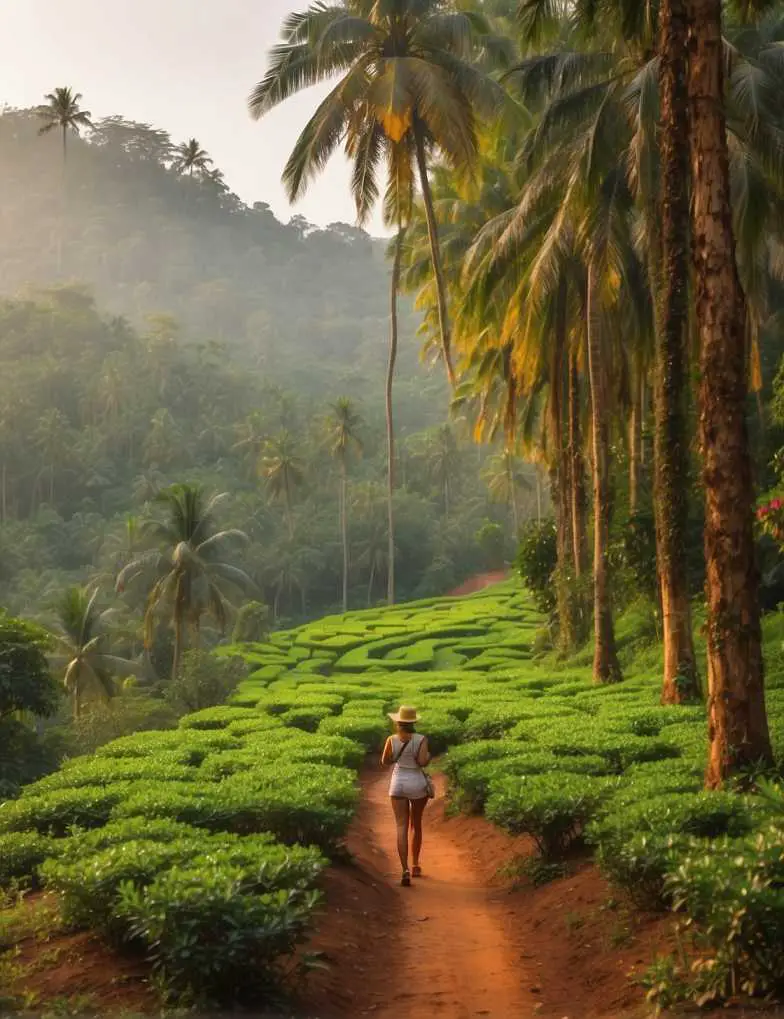
The peak season in Goa, spanning from late December to January, is a period of high energy, vibrant celebrations, and a festive atmosphere, attracting tourists from around the world. While it’s the most popular time to visit, it comes with its own set of challenges.
1. Festive Atmosphere:
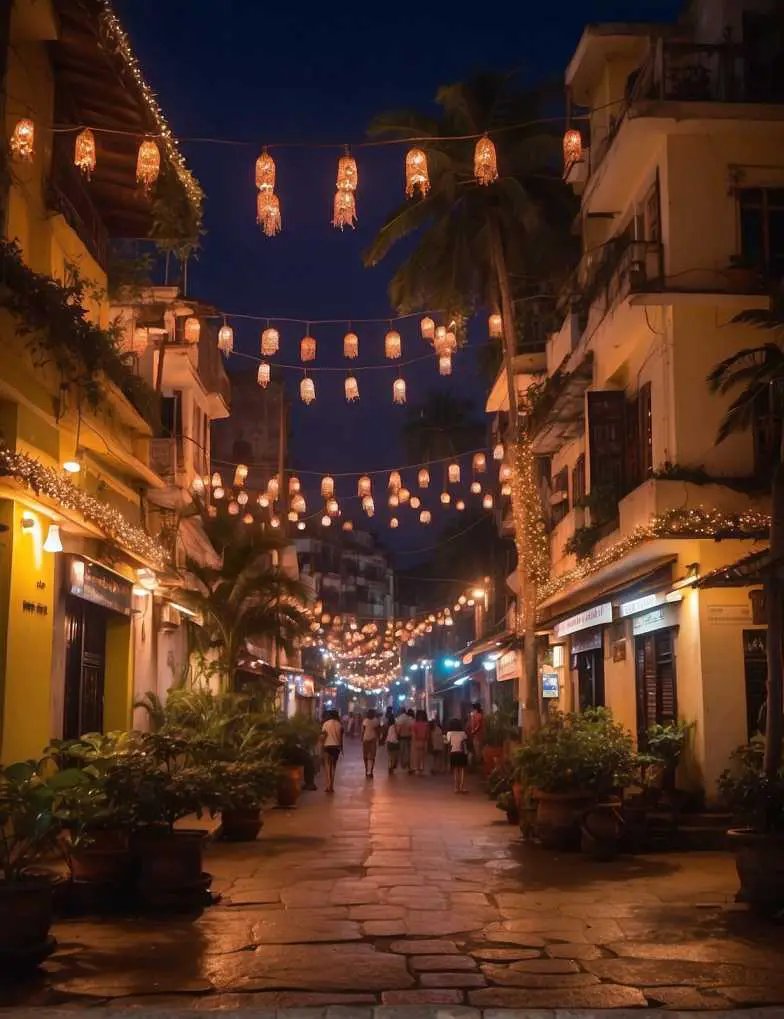
- Christmas and New Year Celebrations: This is when Goa is at its liveliest. The state is decked in festive lights, and there’s a palpable sense of celebration in the air. Christmas in Goa is a unique blend of Indian and Portuguese traditions, and New Year’s Eve is renowned for its extravagant parties and fireworks.
- Cultural Events and Music Festivals: During this time, Goa hosts several music and cultural festivals, drawing in crowds and creating a vibrant, party-like atmosphere across the state.
2. Crowded Beaches and Tourist Spots:
- High Tourist Influx: The biggest challenge during this season is the sheer number of visitors. Goa’s famous beaches like Baga, Calangute, and Anjuna become extremely crowded, which might not be ideal for those seeking tranquility.
- Busy Streets and Markets: The markets and streets are bustling with activity, offering a lively experience but also leading to crowded spaces.
3. Accommodation and Cost:
- Higher Prices: With the peak season demand, prices for accommodation, flights, and local services skyrocket. Budget travelers might find it challenging to find affordable options.
- Advance Bookings Required: Hotels and resorts get booked months in advance. Last-minute planning during this period often leads to limited choices and higher rates.
4. Nightlife and Parties:
- Vibrant Nightlife: Goa’s nightlife peaks during this season, with beach parties, nightclubs, and bars hosting special events and international DJs.
- All-Night Celebrations: The party scene is not limited to nightclubs; impromptu beach parties and all-night celebrations are common, attracting a younger, party-oriented crowd.
5. Weather Conditions:
- Pleasant Climate: The weather during this time is ideal – not too hot during the day and pleasantly cool at night. This makes it perfect for outdoor activities, beach visits, and exploration.
6. Family Considerations:
- Family-Friendly Activities: While there are family-friendly activities and places to visit, the crowded beaches and noisy parties might be overwhelming for families with young children or those seeking a peaceful holiday.
7. Traffic and Local Transport:
- Increased Traffic: The roads in Goa can get congested, especially near popular beaches and tourist spots. Planning travel time accordingly is essential.
Related Articles-
4. The Off-Season Nuances in Goa: Monsoon Magic and Family Challenges
The off-season in Goa, primarily during the monsoon months, presents a different facet of this popular tourist destination. It’s a time when the state’s natural beauty is accentuated by the rains, but it also poses unique challenges, especially for families.
1. Monsoon – The Off-Season Magic:
- Lush Landscape: The monsoon (June to September) transforms Goa into a lush paradise, with its countryside and forests blooming in vibrant green hues. This is a stark contrast to the usual beach-centric image of Goa.
- Waterfalls and Wildlife: The rains breathe life into Goa’s waterfalls, making them a spectacular sight. This season is also great for wildlife enthusiasts, as the sanctuaries and national parks are teeming with flora and fauna.
- Serene Atmosphere: With fewer tourists around, the beaches and streets of Goa are quieter, offering a peaceful and serene environment, which is a stark contrast to the bustling crowds of the peak season.
2. Family Travel Challenges:
- Travel During Peak Monsoon: Traveling with family, especially with young children, can be challenging during the peak monsoon months of July and August. The heavy rains can disrupt travel plans and limit outdoor activities.
- Health and Safety Concerns: The monsoon season sees an increase in mosquitoes and a higher risk of waterborne diseases, which can be a concern for families with young children.
3. Reduced Beach Activities:
- Limited Access to Beaches: The rough seas during the monsoon make swimming and water sports unsafe. Many beach shacks and water sports operators remain closed during this period.
- Indoor Alternatives: Families and other travelers need to look for alternative activities, such as indoor games, visiting museums, or exploring Goan cuisine in local restaurants.
4. Cultural Richness:
- Festivals and Celebrations: Despite being the off-season, monsoon in Goa is marked by unique festivals like Sao Joao, celebrated with boat parades and lively festivities, offering a glimpse into the rich Goan culture.
5. Budget-Friendly Travel:
- Cost-Effective Options: Accommodation and travel costs are significantly lower during the monsoon, making it an attractive option for budget travelers. Hotels often offer off-season discounts, and flights to Goa are generally cheaper.
6. Precautions and Planning:
- Preparation is Key: For those traveling during the monsoon, especially families, it’s essential to be well-prepared. This includes carrying rain gear, planning for indoor activities, and staying informed about the weather conditions.
- Health Precautions: Carrying mosquito repellents and being cautious about waterborne diseases are important considerations during the monsoon.
5. Traveling Smart: Tips for Each Season
- Monsoon Travel: Pack rain gear, plan indoor activities, and enjoy the solitude.
- Summer Visits: Stay hydrated, use sun protection, and enjoy the cost-effective travel options.
- Peak Season: Book well in advance, brace for crowds, and immerse in the festive spirit.
- Family Travel: Be mindful of health precautions, choose the right time, and plan activities that cater to all ages.
1. Hydration and Health:
- Stay Hydrated: Regardless of the season, staying hydrated in Goa’s tropical climate is crucial. Carry a reusable water bottle to keep up with your fluid intake, especially during the hotter months or when exploring outdoor attractions.
- Healthcare Access: Know the locations of nearby healthcare facilities, particularly if traveling with family or during the monsoon when health concerns may arise.
2. Local Cultural Etiquette:
- Respect Local Customs: Understanding and respecting Goan culture and traditions can greatly enhance your travel experience. This is particularly important during religious festivals or when visiting temples and churches.
- Dress Appropriately: When visiting religious sites, dress conservatively to respect local customs.
3. Sustainable Tourism Practices:
- Eco-Friendly Choices: Opt for eco-friendly activities and accommodations. Support local businesses that engage in sustainable practices, helping preserve Goa’s natural beauty.
- Beach Etiquette: Keep the beaches clean. Dispose of waste properly and avoid using plastic bags to help maintain the pristine nature of Goa’s beaches.
4. Safety Precautions:
- Beach Safety: Always follow safety guidelines when swimming or engaging in water sports, especially during the monsoon when the sea can be rough.
- Secure Valuables: In crowded places and during peak season, be mindful of your belongings. Use hotel safes for valuable items and avoid carrying large amounts of cash.
5. Local Transportation:
- Renting Vehicles: Consider renting bikes or scooters for local travel. It’s a cost-effective and enjoyable way to explore, but ensure you have a valid driver’s license and wear helmets.
- Traffic Awareness: Be aware of local traffic rules and conditions, especially during peak season when roads can be congested.
6. Culinary Exploration:
- Try Local Cuisine: Each season in Goa offers unique culinary experiences. From seafood in the warmer months to richer, spicier dishes during the monsoon, make sure to explore the local gastronomy.
- Stay Hygienic: Be cautious about where you eat, especially during the monsoon when there’s a higher risk of foodborne illnesses. Opt for well-reviewed restaurants or eateries.
FAQs (Frequently Asked Questions)
1. Which month should not visit in Goa?
Avoid visiting Goa during the peak monsoon months of July and August due to heavy rainfall and limited beach activities.
2. What is the most crowded month in Goa?
December, particularly around Christmas and New Year’s Eve, is the most crowded month in Goa.
3. Which month is best for Goa?
The best time to visit Goa is from November to February, with pleasant weather and numerous festivals.
4. Is it OK to go Goa in monsoon?
Yes, it’s okay to visit Goa in the monsoon if you don’t mind the rain and are interested in enjoying the lush greenery and quieter ambiance.
5. Can I go Goa in July?
Yes, you can visit Goa in July, but expect heavy rains and limited beach activities.
6. Which is the cheapest time to go Goa?
The monsoon months (June to September) are the cheapest time to visit Goa.
7. Can we go to Goa in September?
Yes, September is a good time as the monsoon starts receding and the tourist crowd is still less.
8. Which month is rainy season in Goa?
The rainy season in Goa is from June to September.
9. Why not to visit Goa in July?
Avoid July due to heavy monsoon rains, flooding risks, and limited beach and outdoor activities.
10. Can we visit Goa in July and August?
Yes, but be prepared for heavy rains and a quieter experience with limited activities.
Conclusion:
Goa, with its dynamic seasons, offers diverse experiences to its visitors. Whether you’re looking for a budget-friendly escape, a family holiday, or a festive getaway, understanding the seasonal characteristics of Goa is key to a fulfilling travel experience. Embrace the unexpected and you might discover a unique facet of this coastal paradise.
For more travel insights and tips, keep following our blog. Here’s to happy travels and new discoveries!
